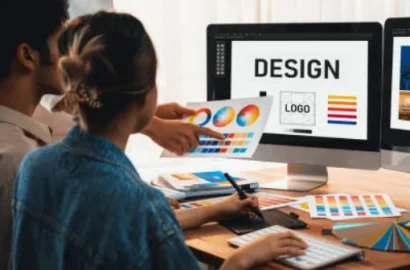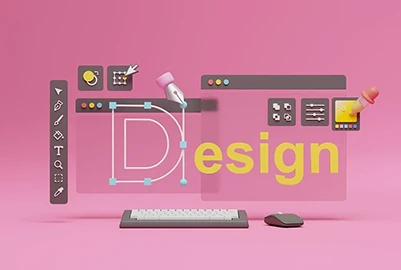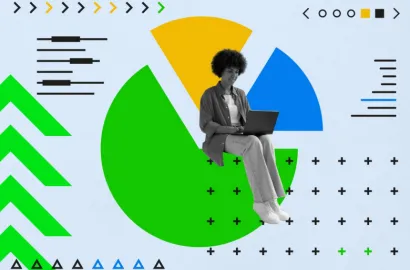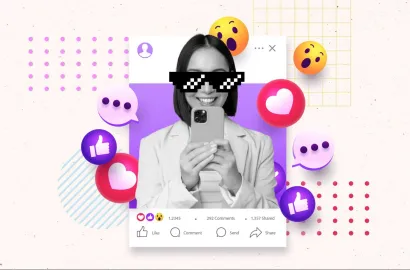Curious about the best graphic design templates for 2025? Whether it's for a business card, flyer, or logo, these templates make designing quick and easy. Find the right one for your needs.
Graphic design, like every other creative field, attracts new ideas and interventions almost every day. It’s easy to lose track of some of the fundamental aspects such as – ‘What is the format of a resume again?’ or ‘On which side of the letterhead, does the address go?’. To reconcile and find the starting point or the home base, we look to design templates.
Design templates take care of the logistic part of the design process, allowing designers to focus on the creative and abstract parts without worrying about the minute details of layout or structure.
In this article, we will look at 25+ graphic design templates and understand their principles, philosophy, context, and use cases. By the end of this article, you will have a bird’s eye view of the commonly used design templates and a sense of how to use them based on the context.
Here’s what we have discussed in the article!
- 14 Best Graphic Design Templates for 2025
- Choosing the Right Graphic Design Template
- Tips for Customizing Your Graphic Design Templates
- Final Thoughts
- FAQs
Top Graphic Design Templates for Your Next Project
Here’s a list of 14 popular templates to help you get started with your next graphic design requirement.
1. Minimalist Business Card Template

A business card is used as a substitute for information about the person or business whose name is printed on it, acting as a compact representation of their identity. It should include elements that reflect the personality or brand values of the individual or organization, as well as trigger memory recall.
For example, a photographer’s card could have design elements—such as color schemes, fonts, gradients, backgrounds, or textures—that evoke creativity, artistry, or a distinct personal trait. These details help establish a visual narrative that aligns with their profession and individuality. A minimalist design template helps place those elements with clarity and without any clutter.
2. Bold Poster Design Template

A poster, as a medium, is designed to make a statement, and fulfilling this purpose effectively depends on its design. The boldness and the visual impact of a poster template should align with the weight or significance of the statement it aims to convey.
For instance, if the message is something as charged as “This is a revolution”, the poster should have sharp fonts, bright colors, and a cluttered design that symbolizes chaos and intensity, creating a sense of urgency and even mild cognitive overload upon viewing, which mirrors the energy of the message. On the other hand, if the statement is more relaxed "We are cool," the design should adopt a softer approach like rounded fonts, dark or neutral colors, and a clean, simple layout that conveys calmness, and sophistication.
3. Elegant Wedding Invite Template
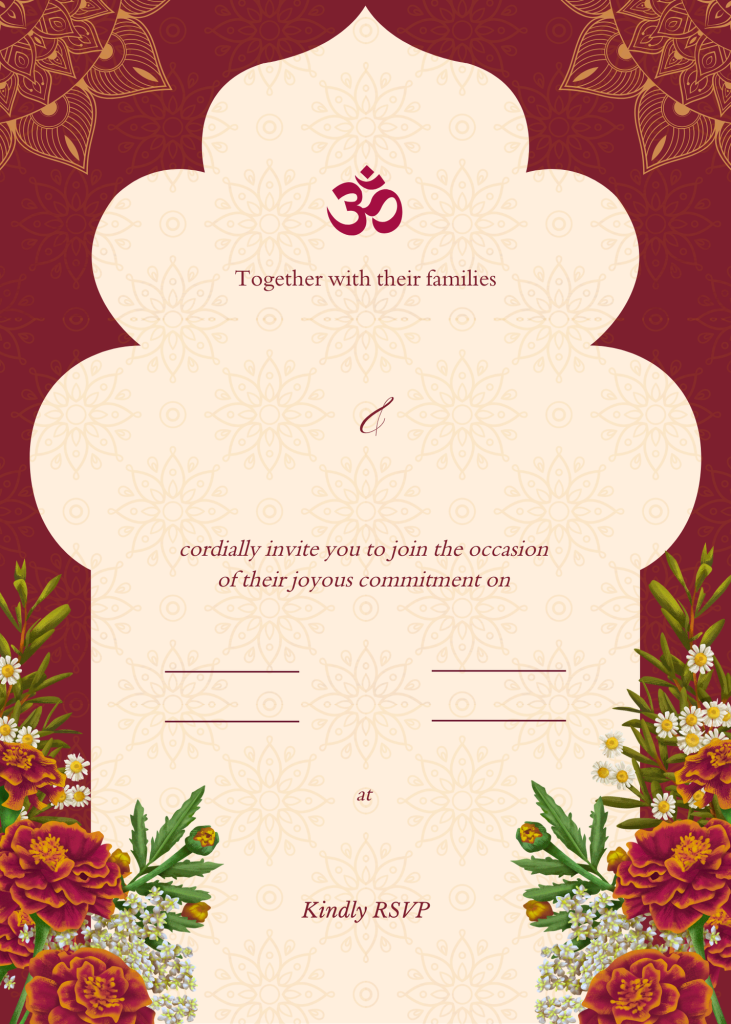
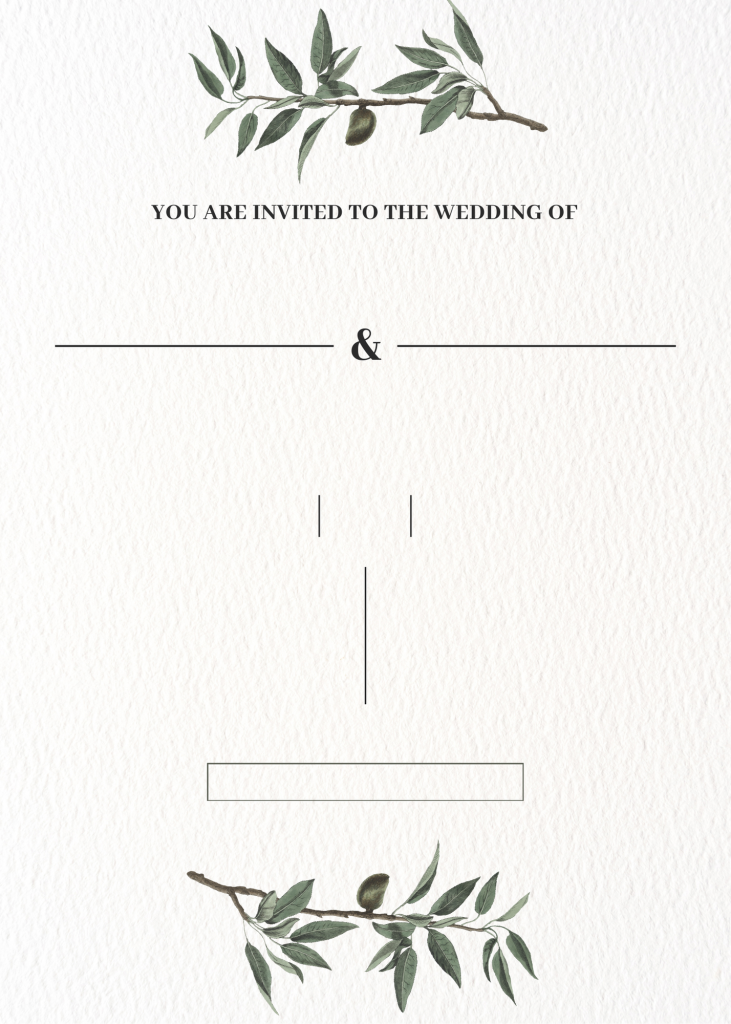
Weddings are deeply rooted in culture and often reflect the traditions and values of a society or community. For this reason, a wedding invitation template should incorporate design elements that reflect the culture and its meaning systems, in turn creating a sense of connection with the invitee.
Elegance can mean different things in different cultures. In Indian weddings, intricate gold patterns and vibrant colors might signify elegance, while in Scandinavian weddings, minimalistic designs with muted tones and clean lines are considered elegant. The chosen template will, hence, always need to be customized to best fit the cultural requirements.
4. Vibrant Flyer Design Template

If you need to promote an event or a sale, a flyer can be a useful tool, but only if it does its job. Like the template shown above, a flyer should visually represent the essence of the event or sale, while also grabbing attention quickly.
An important thing to consider while designing a flyer is people’s behavior towards it. It needs to convey information within seconds, which is usually the time before it is thrown away or disregarded. Therefore, the chosen design template should prioritize clarity, with bold headlines, striking visuals, and a concise message that immediately communicates the purpose.
5. Clean Brochure Template
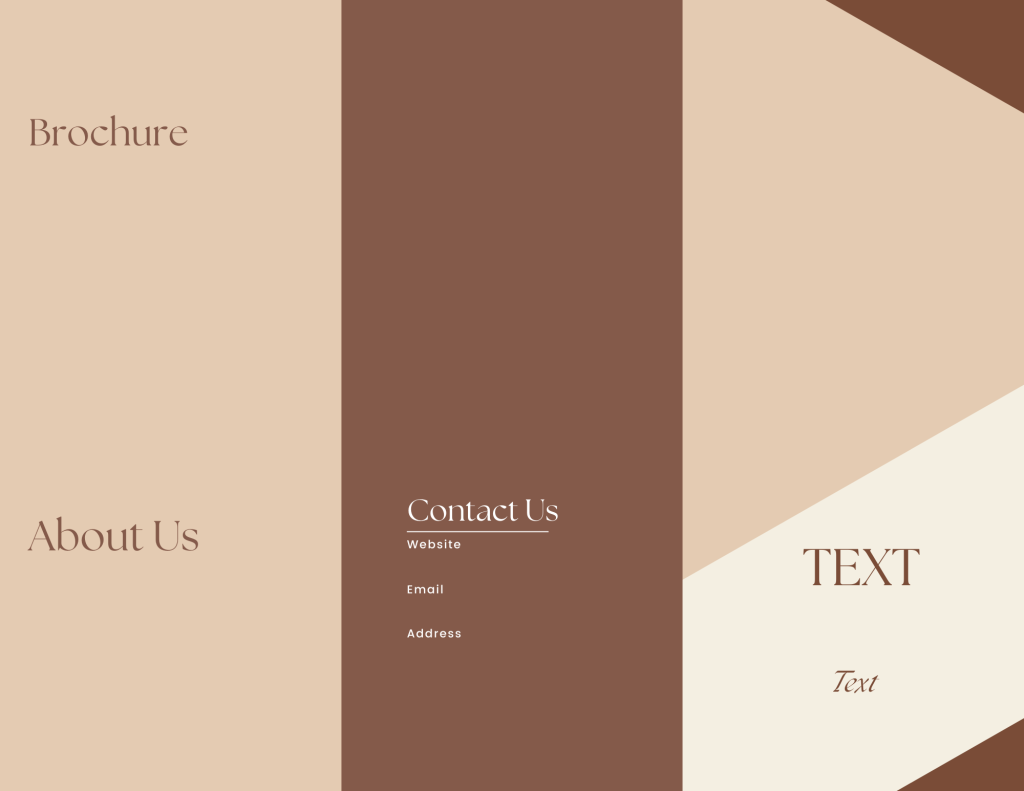
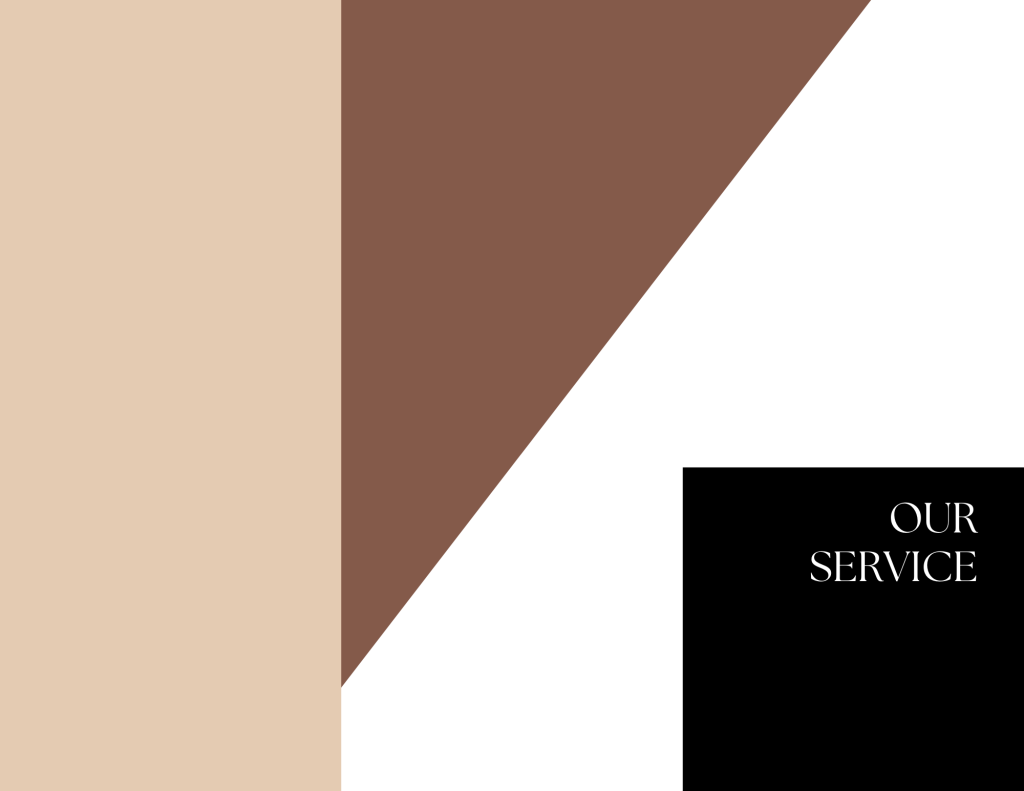
When it comes to brochures, simplicity speaks volumes. While similar to a flyer in size and footprint, a brochure differs in the amount of content it can present and the level of attention it receives from readers. Unlike a flyer, which must convey its message almost instantly, a brochure often spends a bit more time in the hands of the audience, which allows for a minute or two of storytelling, but not more.
The design for such a collateral must be concise and engaging. A clean brochure template, like the one shown above, balances by providing ample space for images and text while leaving enough empty or negative space to prevent it from feeling overwhelming.
6. Quote Design Template


A graphic design quote template should be chosen based on what is being said and by whom. The design should complement the tone and message of the words—inspirational, humorous, or thought-provoking—while also reflecting the personality or authority of the speaker.
For instance, a minimalist template might suit a profound quote by a philosopher, whereas a colorful template could match a playful or motivational quote by a pop culture icon.
7. Podcast Cover Template
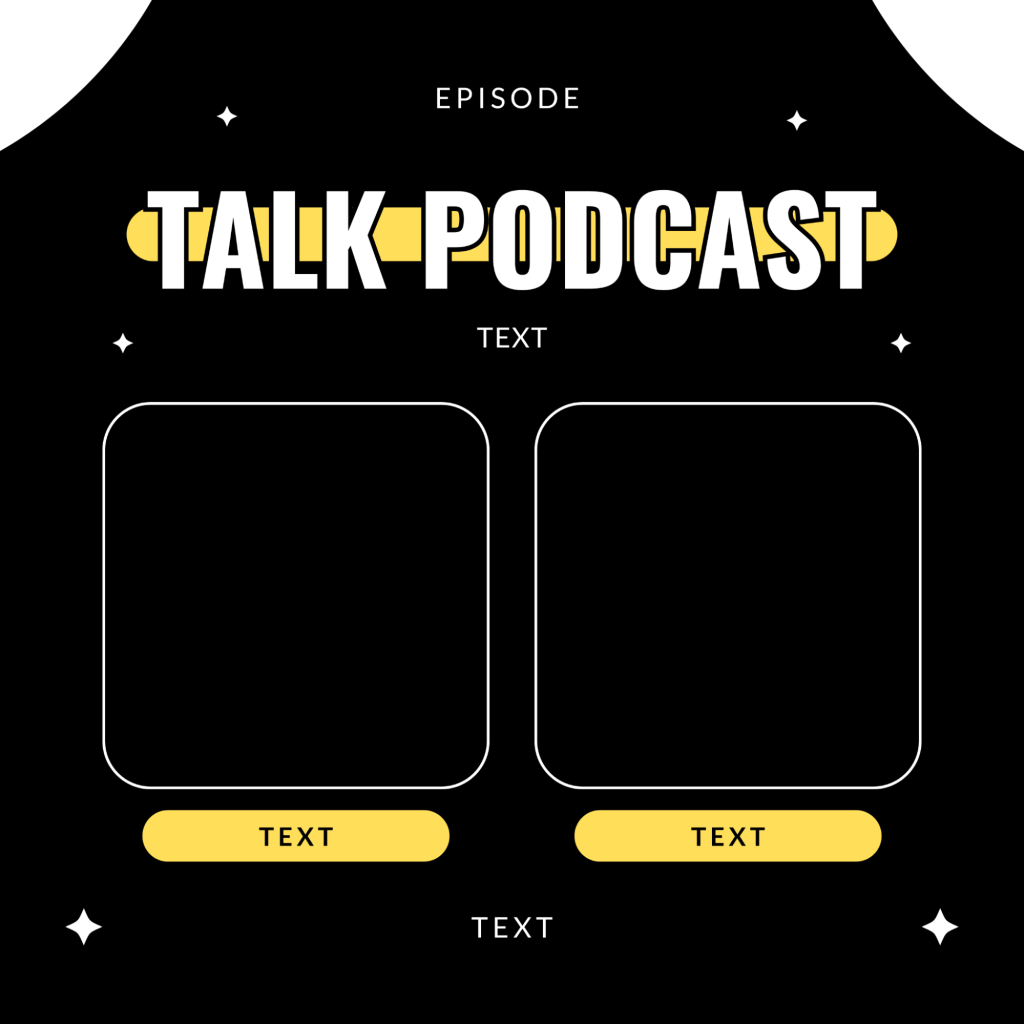
With the rise of podcasts, having a standout cover image has become essential. It should also be understood that a podcast cover is more impactful, statistically, for the new listener as it is their first point of contact with the content.
A suitable podcast cover template should have space for an image or text that prologues the topic of the conversation, as in the example shown above. Potential listeners should have a clear idea of the conversation and information they can expect which makes the content feel approachable and relevant.
8. Certificate Template

A certificate is a symbol of recognition and achievement. Whether awarded for academic success, professional success, or personal accomplishments, a certificate template should convey the significance of the achievement it represents.
A suitable certificate template should include space for information such as the name, the nature of the achievement, the date, and the awarding authority. The typography should be clear and dignified, with elegant fonts that maintain the formality of the certificate without overwhelming the content. The overall design should take into account that the certificate is a keepsake.
9. Book Cover Template
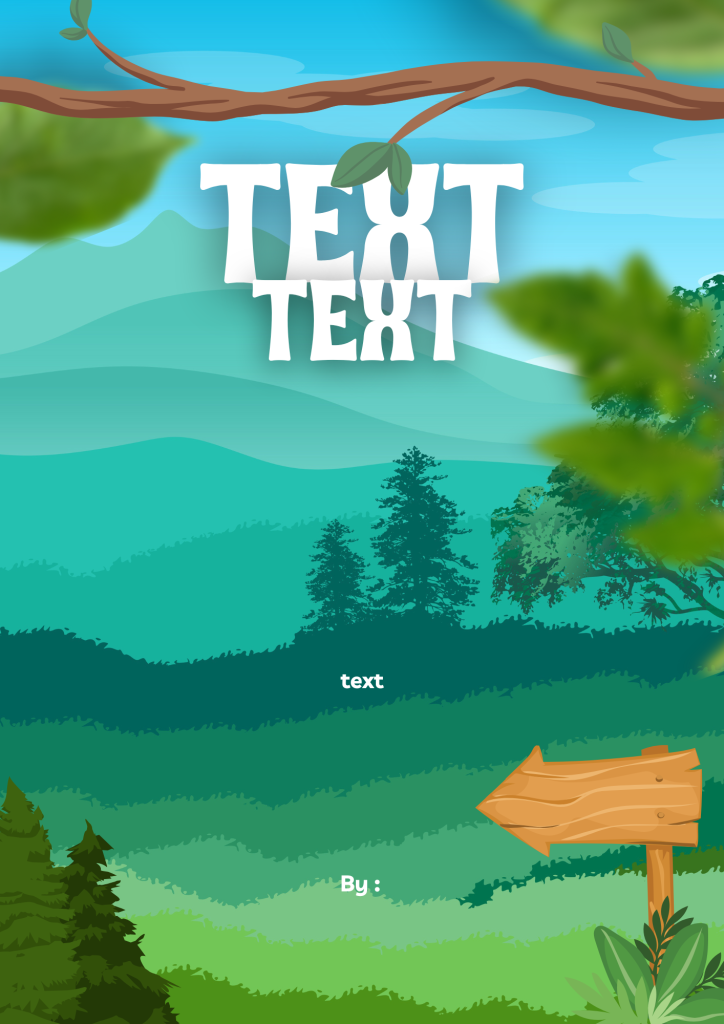

Turns out, you can really judge a book by its cover. A cover shoulders a big responsibility that way, as the design can often determine whether someone picks up the book or dismisses it entirely.
As a rule of thumb, a book cover template should be selected keeping in mind either certain elements or main characters of the story, or a part of the reading experience–such as suspense, nostalgia, or adventure. In other words, context is important when it comes to designing. Sometimes, the title written straight across a solid color background also works.
10. Retro Poster Template
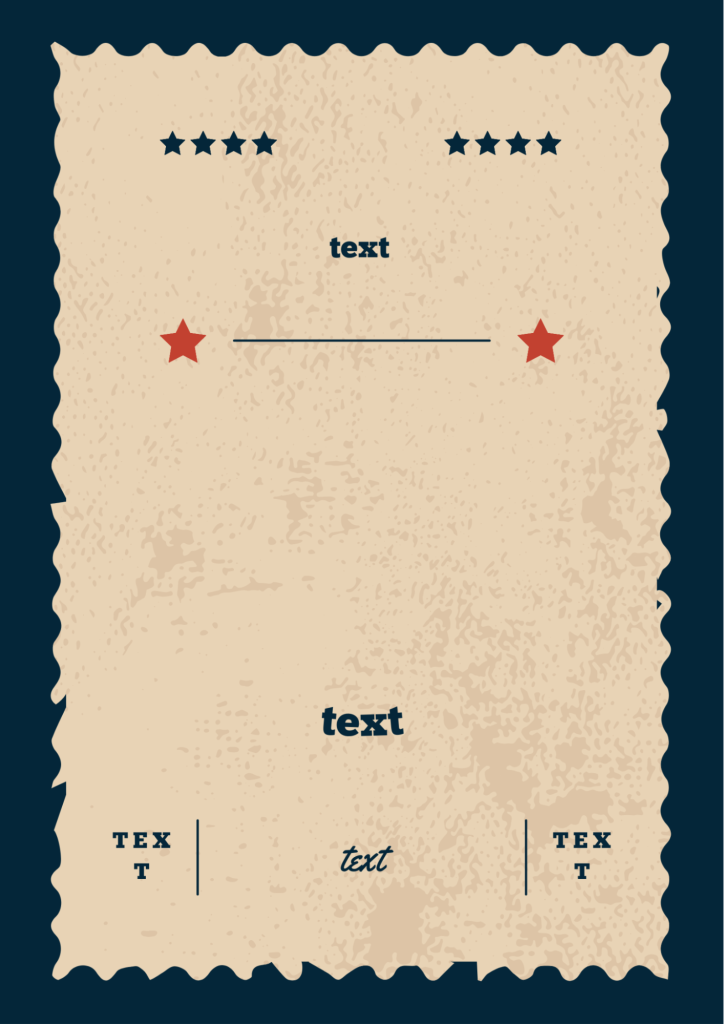
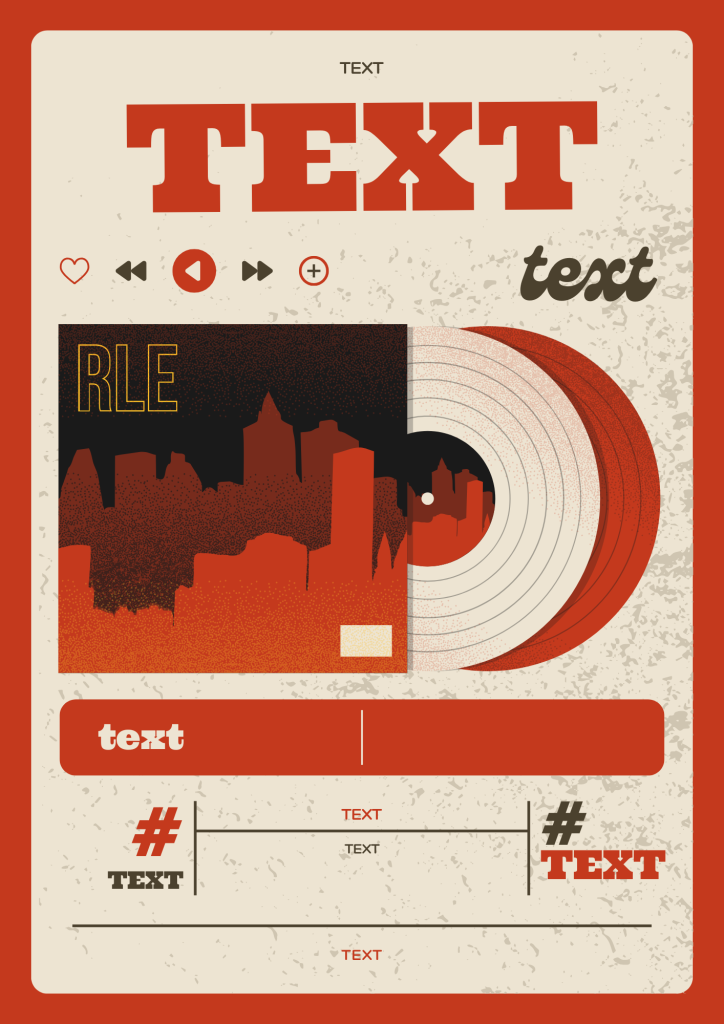
As discussed, a poster is supposed to make a statement. But, a retro-themed poster has a special ability to invoke feelings of nostalgia and, subconsciously, trust. It triggers what is known as the nostalgia effect– the tendency to place increased value on the social connectedness of something, and sometimes, status-quo bias–the tendency to resist institutional change and stick to the default option.
Both of the mentioned biases, together, result in brand loyalty. These factors should be kept in mind when choosing a template for a retro-themed poster.
11. Event Invitation Template
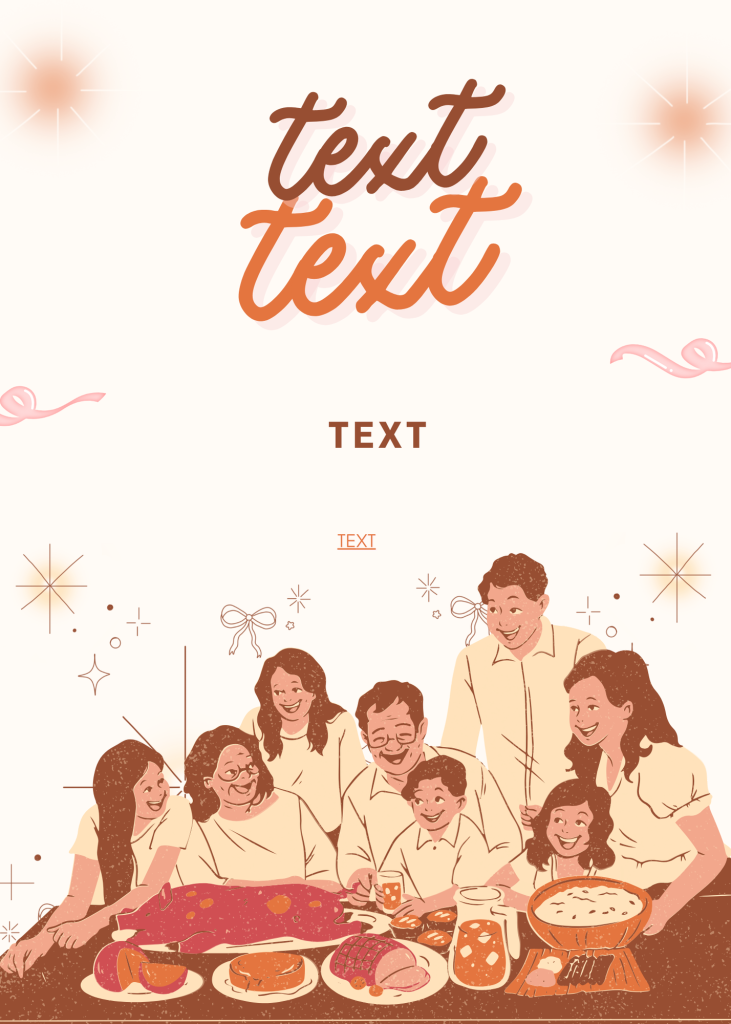
An event invitation is the first touchpoint between the host and the invitee. It sets the tone for the occasion and can even influence footfall.
The design of the invitation should communicate the essence of the event before the guest arrives. Just like with any other template, the key is to understand the nature of the event and the audience it is catering to when choosing an event invite template.
12. Abstract Logo Template
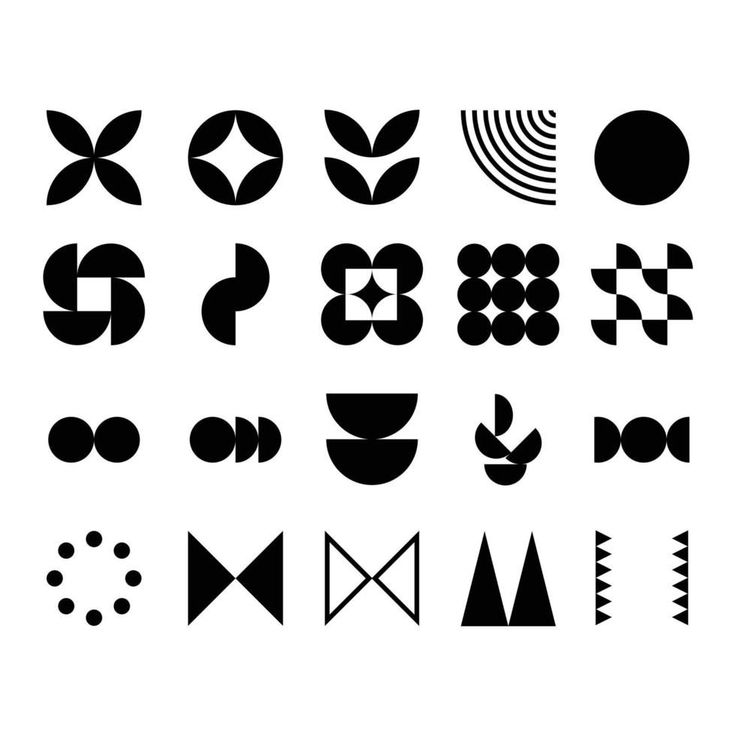

For a more avant-garde, new-age brand, an abstract logo template can offer the flexibility often associated with the services these brands offer.
An abstract logo template, because it relies on shapes, lines, and colors to evoke emotion and communicate brand values, should allow for flexibility in these elements so that there is freedom to experiment with different forms and compositions. Be mindful of this aspect when choosing one.
13. Sports Event Flyer Template
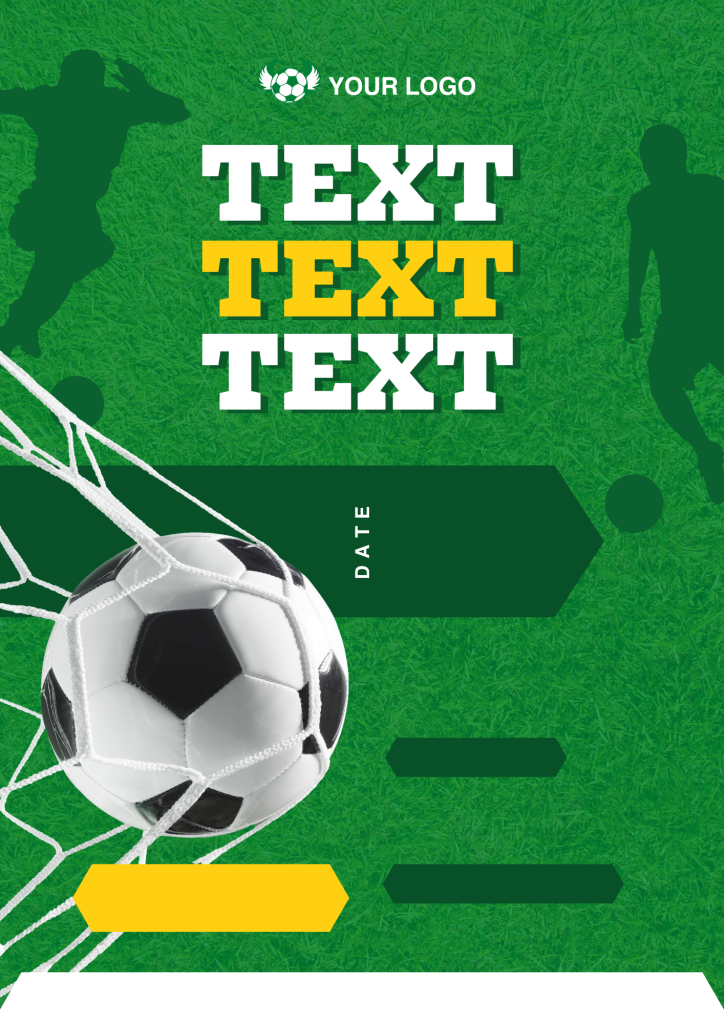
Alongside the philosophy of a flyer as a medium, it is also important to understand the essence of a sporting event. We have established that a flyer should convey the experience; in the context of a sporting event, this becomes a bit easier.
The essence of a sporting event is captured in the moment of impact—the physical contact that defines the intensity and excitement of the game. For cricket, it’s the moment between the bat and the ball; for football, it’s the strike of the foot against the ball; for racquet sports, the shuttle or ball against the net. A sports flyer template that has empty space in the foreground to show this impact can serve the purpose well.
14. Corporate Presentation Template
A corporate presentation template is designed to communicate business ideas, strategies, and reports in a professional and polished manner. The color palette should align with the brand’s corporate identity, using muted tones with bold accent colors to emphasize key points. The typography should be simple and legible, with enough space between text blocks to ensure clarity.
Sometimes, to set the context of the conversation, using a blackboard background also helps, as it primes the audience to listen carefully.
Choosing the Right Graphic Design Template
Selecting the right graphic design template is a critical step in ensuring your project communicates the intended message effectively. To do this well, it's essential to understand the context and behavior of the audience.
Understanding the context can help understand the ‘why’ or the purpose of the design- is it a promotional piece, an informational graphic, or a personal brand identity? Each type of design has different requirements, and choosing a template that aligns with these requirements is key. For example, a flyer template designed for a fun, casual event will differ from a corporate brochure template meant to convey professionalism.
Understanding the target audience is also important when choosing a template. A template designed for a younger audience may embrace bold colors, unconventional typography, and creative layouts; while a template meant for a more mature or professional audience may call for more minimalist design choices, such as neutral colors, serif fonts, and clear and structured layouts. The visual style should resonate with the audience’s expectations.
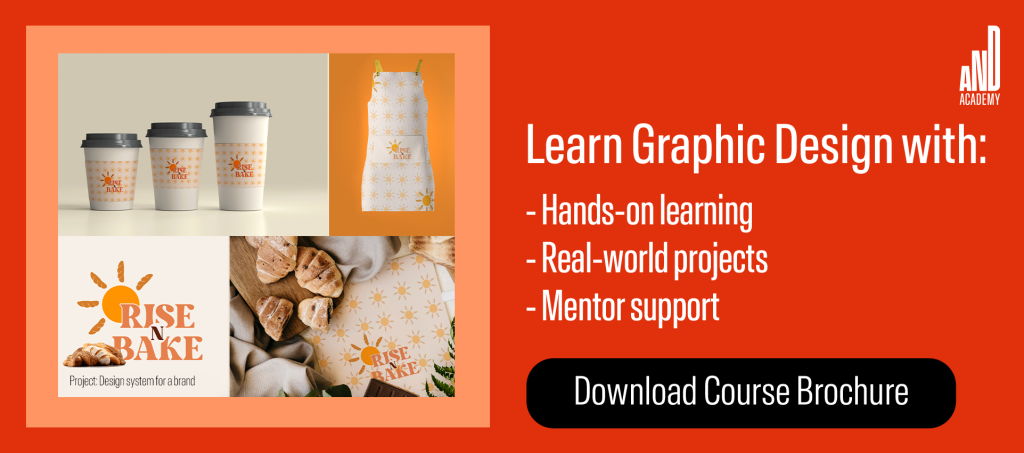
Tips for Customizing Your Graphic Design Templates
Here are a few tips to tweak your chosen template to suit your needs and make the design stand out:
1. Keep It On-Brand/Context
No matter what template you choose, it should always fit the context it is designed within. If it’s a logo it should embody the essence of the brand it represents, for which experimenting with art styles can help. On the other hand, if it’s a flyer it should convey the event or message in a clear way, which can be done using digital art. Regardless of the template type, it can only be effective when customized accurately for context.
Experiment with Colors and Fonts
Even if the template has a set color scheme or font style, there is always room for experimentation. Playing around with colors and typography to create a design that feels fresh and unique can serve well and beget innovation.
Final Thoughts
Although templates offer a solid foundation to start with the design process, they must be customized to ensure they stand out and resonate with the intended audience. Be it wanting to select the right template based on industry or a certain profession or trying to fine-tune elements like fonts and colors, customization is important for creating a design that is consistent and also works. Always keep the broader context in focus and be mindful of how your design communicates the message, evokes emotions, and leaves a lasting impression.
FAQs
1. Are graphic design templates customizable?
Yes. Most templates are customizable. You can modify colors, fonts, and images to fit your specific needs.
2. Where can I find high-quality graphic design templates?
You can find premium templates on platforms like Adobe Stock, Envato Elements, and Canva.
3. Can I use templates for commercial projects?
Many templates are available for commercial use, but it’s important to check the license terms before using them for commercial purposes.
4. Do I need design skills to use templates?
Not necessarily. Templates are designed to be customized, making them suitable for beginners and professionals alike.
5. Are templates free?
There are both free and paid templates available. Free templates may have fewer features, but premium templates often offer more advanced designs and customization options.
Next steps
We hope you’ve enjoyed learning about the role of AI in graphic design, and feel (cautiously) optimistic about the future of AI. We also recommend that you check out this project by AND Learner, Kayo Hattori for inspiration on how creative you can get with graphic design.
Additionally, here are some more resources you can consider:
- Watch this session by design veteran and AND’s Academic Head, Prachi Mittal, and our Course Lead, Soumya Tiwari.
- Talk to a course advisor to discuss how you can transform your career with one of our courses.
- Pursue our Graphic Design courses - all courses are taught through live, interactive classes by industry experts, and some even offer a Job Guarantee.
- Take advantage of the scholarship and funding options that come with our courses to overcome any financial hurdle on the path of your career transformation.
Note: All information and/or data from external sources is believed to be accurate as of the date of publication.



